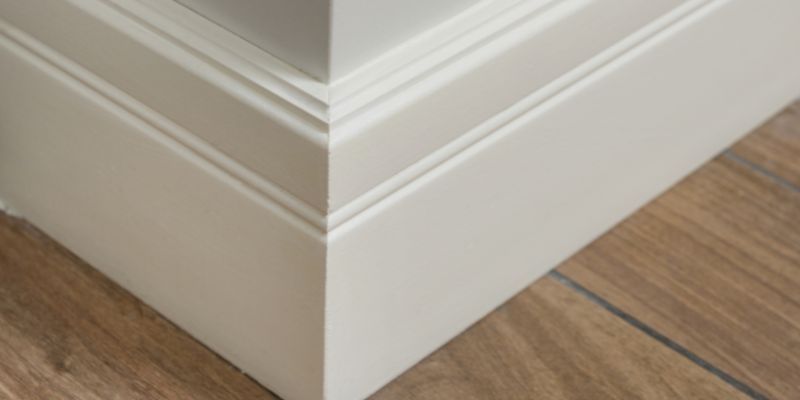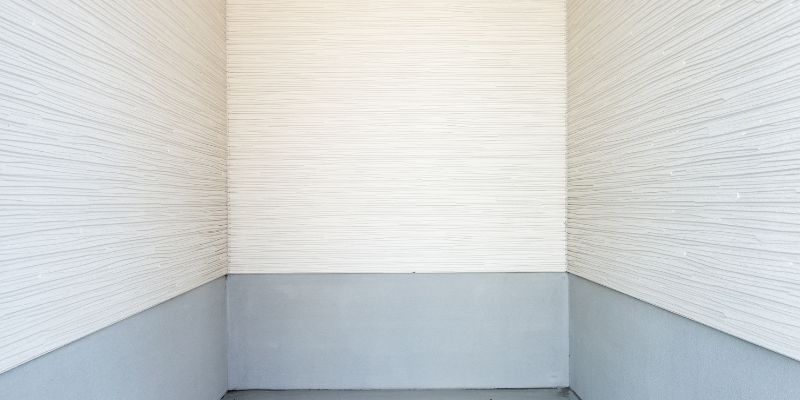To cut quarter round inside corner, use a miter saw set at a 45-degree angle. Additionally, ensure the ends are cut in opposite directions to form a tight inside corner joint.
Cutting quarter round inside corners requires specific techniques to achieve a neat and professional look. When it comes to precision cuts, using a miter saw is crucial for maintaining accuracy and achieving seamless joints. Understanding the correct angle and positioning of the quarter round will help you achieve a clean and professional finish.
Properly cut inside corners can enhance the overall aesthetic of your installation, so it’s important to take the time and care to execute this step accurately. Mastering this technique will enable you to achieve a polished and refined appearance in your quarter round installation.
Cutting Quarter Round For Inside Corners
Installing quarter round usually involves cutting the pieces to fit neatly in corners. Cutting quarter round for inside corners can be a bit tricky, but with the right techniques, it can be achieved seamlessly. In this section, we will explore the proper methods for cutting quarter round for inside corners to achieve a professional finish.

Understanding The Structure Of Quarter Round Molding
Before delving into the cutting process, it’s crucial to understand the structure of quarter round molding. Quarter round is a small, convex molding that is commonly used to cover gaps between baseboards and flooring or to provide a finished look to cabinetry or furniture. It is typically installed at a 90-degree angle, forming inside and outside corners. When cutting quarter round for inside corners, precise measurements and angles are essential for a seamless fit.
Importance Of Accurate Cuts For Interior Finishing
Accurate cuts are crucial in interior finishing to ensure a professional and polished appearance. When it comes to cutting quarter round for inside corners, precision is key in achieving tight, gap-free joints. Properly cut quarter round not only enhances the aesthetic appeal of a room but also prevents potential problems such as water damage and pest intrusion by sealing off gaps effectively.
Tools For Quarter Round Cutting
When it comes to installing quarter round moldings, having the right tools for the job is crucial for achieving professional results. In this section, we’ll discuss the essential tools you’ll need for cutting quarter round moldings, including measuring tape and pencil, miter saw, and coping saw. Each tool plays a unique role in achieving precise and seamless quarter round cuts.
Measuring Tape And Pencil For Precision
Before cutting quarter round moldings, accurate measurements are key to ensure a seamless fit. Using a measuring tape allows you to obtain precise dimensions, while a pencil is essential for marking the molding with the exact cutting points.
Miter Saw – A Crucial Tool For Expert Cuts
A miter saw is an indispensable tool for achieving perfectly angled cuts on quarter round moldings. It allows for quick and accurate cutting at various angles, ensuring seamless corners and a professional finish.
Coping Saw For Detailed And Complex Angles
When facing detailed and complex angles, a coping saw is essential for achieving intricate cuts. It allows for precise trimming to match the contour of the adjoining molding, ensuring each joint fits seamlessly for a polished look.
Expert Tips On Measuring Inside Corners
How To Ensure Accurate Measurements Every Time
When cutting quarter round inside corners, it is crucial to take precise measurements to ensure a perfect fit. Here are some expert tips to help you achieve accurate measurements every time:
- Use a high-quality measuring tape to obtain precise measurements of the inside corner angles.
- Double-check the measurements to avoid any errors before making any cuts.
- Ensure the quarter round moldings are tightly pressed against the inside corner when measuring to get the most accurate measurements.
Using A Coping Saw Vs. A Miter Saw For Better Fit
Choosing the right tool for cutting quarter round inside corners can make a significant difference in the fit and finish of the moldings. Here are some considerations for using a coping saw or a miter saw:
| Tool | Pros | Cons |
|---|---|---|
| Coping Saw | Allows for intricate cuts to match the shape of the molding for a seamless fit. | Requires practice and skill to master the coping technique. |
| Miter Saw | Provides quick and precise straight cuts for inside corners. | May not achieve the same level of detail and custom fit as a coping saw. |
How To Cut Quarter Round Inside Corner : Expert Tips
Trimming quarter round molding for inside corners can be tricky, but with the right technique and expert tips, you can achieve clean and precise cuts. Below, we outline the step-by-step process on the cutting technique, along with valuable tips to handle complex angles and tricky cuts.
Step-by-step Process On The Cutting Technique
When cutting quarter round molding for inside corners, it’s essential to follow a precise process to ensure a seamless fit. Below are the steps to execute the cutting technique with expertise:
- Measure the inside corner angle using a protractor or specialized angle measuring tool. This will help determine the exact miter angle for the quarter round.
- Set the miter saw to the identified angle and make a test cut on a scrap piece to verify the accuracy of the angle before cutting the actual piece of quarter round.
- Once the angle is confirmed, place the quarter round molding in the miter saw, ensuring it is held securely against the fence to prevent any slippage during the cut.
- With steady hands, carefully lower the saw blade onto the molding and make the cut, ensuring a smooth and even motion to avoid splintering.
- Test the cut piece against the corner to check for accuracy and make adjustments if necessary.
Tips To Handle Complex Angles And Tricky Cuts
Dealing with complex angles and intricate cuts requires finesse and attention to detail. Here are expert tips to navigate these challenges effectively:
- Use a coping saw for coping inside corners, especially when dealing with irregular angles or non-90-degree corners. Coping ensures a tight seam and reduces the risk of unsightly gaps.
- Opt for a compound miter saw for bevel cuts on quarter round molding, as it allows for both miter and bevel adjustments, making it ideal for complex corner cuts.
- Take accurate measurements and double-check the angles before cutting, as precision is crucial to achieving a flawless fit for inside corners.
- Consider creating a template for challenging corners to ensure consistency across multiple cuts, especially in cases where the room features multiple inside corners with varying angles.
- Utilize a quality sharp blade to minimize splintering and ensure clean, precise cuts, enhancing the overall finish of the quarter round molding.
Finishing Touches Post-cutting
Cutting quarter round inside corners can transform the look of your room, but the finishing touches are equally important to achieve a polished final result. After cutting the quarter round, these additional steps will ensure a professional and flawless finish.

Sanding The Edges For A Smooth Finish
Sanding the edges of the quarter round is crucial for achieving a smooth finish. Use a fine-grit sandpaper to gently sand the edges, removing any rough spots or imperfections. This step will not only improve the appearance of the quarter round but also ensure a seamless transition between the adjoining walls and floors.
Checking For Gaps And Applying Appropriate Caulk
After cutting and fitting the quarter round, it’s essential to meticulously check for gaps between the quarter round and the wall or floor. Any noticeable gaps should be filled with an appropriate caulk to maintain a consistent and polished look. Choose a caulk color that matches the quarter round to achieve a seamless and professional finish.
Painting Or Staining For An Impeccable Look
Painting or staining the quarter round is the final step to achieve an impeccable look. Select a high-quality paint or stain that complements your existing interior design. Apply a smooth and even coat, ensuring complete coverage and a uniform finish. This finishing touch will enhance the overall aesthetics of the room and elevate the visual appeal of the quarter round.
Frequently Asked Questions On How To Cut Quarter Round Inside Corner
How Can I Cut Quarter Round Inside Corners Accurately?
To cut quarter round inside corners accurately, use a miter saw to make precise 45-degree angle cuts. Measure and mark the molding, then align the saw blade with the marks before making the cut. Ensure the corners are tightly joined for a seamless finish.
What Tools Do I Need To Cut Quarter Round Inside Corners?
To cut quarter round inside corners, you will need a miter saw, a measuring tape, a pencil for marking, and safety goggles. The miter saw ensures precise angled cuts, while the measuring tape and pencil help mark the molding accurately.
Why Is It Important To Cut Quarter Round Inside Corners Perfectly?
Cutting quarter round inside corners perfectly ensures a professional and visually appealing finish. Precise cuts enable the corners to fit seamlessly, reducing gaps and creating a polished look. Properly cut corners also contribute to the longevity and durability of the quarter round installation.
Conclusion
Cutting quarter round inside corners requires precision and attention to detail. Follow the steps carefully, and you can achieve clean and professional-looking results. Remember to measure accurately and use the right tools for the job. With practice, you’ll gain confidence in your abilities to complete this task with ease.
Keep practicing and refining your technique for best outcomes.



2 thoughts on “How to Cut Quarter Round Inside Corner: Expert Tips”